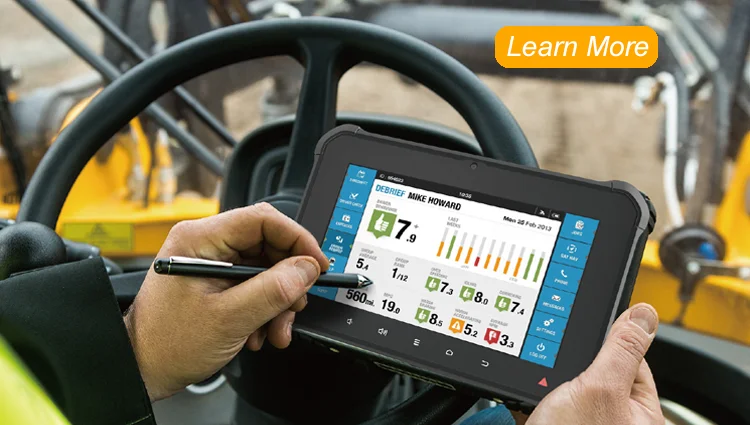Selecting the right computer can significantly impact your productivity, gaming experience, or multimedia tasks. When deciding between an all-in-one (AIO) and a desktop computer, understanding their unique features and benefits is crucial. This comprehensive guide will help you determine which type of PC best suits your needs.
Understanding All-in-One Computers
Design and Form Factor
All-in-one computers integrate the monitor and internal components into a single unit. This design creates a sleek, space-saving solution ideal for minimalistic setups.
Advantages:
- Space Efficiency: AIO PCs eliminate the need for separate towers and monitor connections, reducing cable clutter and saving desk space.
- Aesthetic Appeal: Modern AIOs often boast elegant, slim designs that complement contemporary office environments or living spaces.
- Portability: While not as portable as laptops, AIOs are easier to move compared to traditional desktops due to fewer components.
Disadvantages:
- Limited Upgradability: The compact design can restrict hardware upgrades, often limiting the ability to replace or upgrade components such as the CPU or GPU.
- Repair Challenges: Integrated components can complicate repairs and might necessitate professional service for issues that would be simple in a traditional desktop.
Performance and Use Cases
AIOs are equipped to handle a range of tasks from basic computing to more demanding applications. Many modern AIOs feature powerful processors, ample RAM, and SSDs for quick data access.
Suitable For:
- Office Work: AIOs are excellent for office tasks like word processing, spreadsheets, and video conferencing.
- Multimedia: They are well-suited for watching videos, light photo editing, and casual gaming.
- Educational Purposes: Ideal for students requiring a reliable and aesthetically pleasing machine for studying and online classes.
Less Suitable For:
- Heavy Gaming: Most AIOs lack high-end graphics cards needed for modern AAA gaming.
- Professional Graphics Work: Tasks such as 3D rendering and advanced video editing may be hindered by limited upgrade options.
Exploring Desktop Computers
Design and Form Factor
Desktop computers consist of separate components: a tower, monitor, keyboard, and mouse. This modular design offers more flexibility in terms of hardware and customization.
Advantages:
- High Customizability: Users can easily upgrade components such as the CPU, GPU, and storage, tailoring the machine to specific needs.
- Superior Performance: Desktop towers can house more powerful components, often leading to better performance in demanding applications.
- Cooling Efficiency: Larger cases provide better airflow and cooling options, crucial for high-performance tasks.
Disadvantages:
- Space Consumption: Desktops require more space due to separate components and additional cabling.
- Aesthetic and Portability: Desktops are generally bulkier and less visually appealing compared to AIOs. Moving a desktop setup is cumbersome.
Performance and Use Cases
Desktops offer superior performance capabilities, particularly when customized with high-end components. They can cater to a wide variety of tasks, from everyday computing to specialized applications.
Suitable For:
- Gaming: Desktops can be equipped with powerful GPUs, making them ideal for gaming enthusiasts seeking high frame rates and detailed graphics.
- Professional Applications: Suitable for tasks requiring robust computing power, such as video editing, 3D modeling, and software development.
- Extended Use: Perfect for environments where the computer runs for extended periods, thanks to better cooling systems.
Less Suitable For:
- Casual Users: May find desktops unnecessarily complex and cumbersome compared to simpler alternatives.
- Limited Space: Not ideal for environments where space is at a premium.
Comparing Costs
Initial Investment
- All-in-One: Typically, AIOs come with a higher initial cost due to their integrated design and built-in display.
- Desktop: Initial costs can vary widely depending on the chosen components. Entry-level desktops can be less expensive than AIOs, but high-performance desktops can exceed AIO costs.
Long-Term Costs
- All-in-One: Potentially higher repair costs and limited upgrade options can lead to earlier replacement needs.
- Desktop: Long-term costs are generally lower due to the ability to upgrade individual components instead of replacing the entire system.
Maintenance and Upgradability
All-in-One Computers
Maintenance:
- Regular cleaning of vents and ensuring no blockage can help maintain performance.
- Due to the integrated design, professional help may be required for internal repairs.
Upgradability:
- Typically limited to RAM and storage upgrades, depending on the model.
- CPU and GPU upgrades are often impractical due to space and component constraints.
Desktop Computers
Maintenance:
- Regular cleaning of dust from the case and components is essential to ensure optimal performance.
- Users can perform most upgrades and repairs independently, reducing downtime and repair costs.
Upgradability:
- Offers extensive upgradability including CPU, GPU, RAM, and storage, allowing for extended system lifespan and improved performance over time.
Suggested Diagram: Cost Comparison Over Time
mermaid graph LR
A[Initial Cost] -->|Higher| B[All-in-One]
A -->|Variable| C[Desktop]
B -->|Higher Repair Costs| D[Long-Term Costs]
C -->|Lower Repair Costs| E[Long-Term Costs]
Making the Right Choice
When to Choose an All-in-One
- Space Constraints: If desk space is limited and a clean setup is preferred.
- Aesthetic Preference: For users who value design and minimalism.
- General Use: Suitable for office tasks, multimedia consumption, and educational use.
When to Choose a Desktop
- Performance Needs: Ideal for users requiring high performance for gaming, professional applications, or heavy multitasking.
- Future-Proofing: Best for those who wish to upgrade components over time.
- Cooling Requirements: Necessary for extended use and systems needing effective cooling solutions.
Conclusion
Both all-in-one and desktop computers offer distinct advantages depending on user needs. AIOs provide a compact, stylish solution ideal for general use and spaces where simplicity is key. Desktops deliver superior performance, extensive upgradability, and better cooling, making them suitable for gaming and professional applications. Evaluate your specific requirements, budget, and preferences to choose the best PC for your needs.

